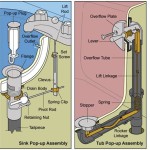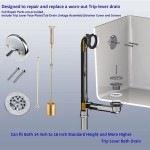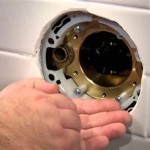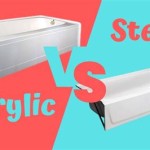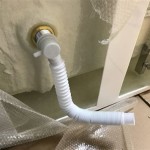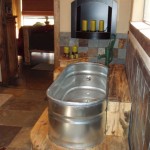What Are Bathtubs Made Of Today?
The modern bathtub is a fixture of hygiene and relaxation found in countless homes worldwide. While the basic function remains the same – a vessel for holding water for bathing – the materials used in their construction have evolved significantly over time. Choosing the right bathtub material is crucial, as it impacts durability, heat retention, aesthetics, ease of maintenance, and overall cost. Today's market offers a diverse array of materials, each with its own set of advantages and disadvantages. Understanding these materials is essential for making an informed decision when selecting a bathtub.
Historically, bathtubs were crafted from materials like copper, tin, and even marble. These materials were chosen for their ability to hold water and, in some cases, retain heat. However, they were often expensive, heavy, and presented challenges in terms of maintenance. The development of new manufacturing processes and materials in the 20th and 21st centuries has led to a wider variety of options, making bathtubs more accessible and adaptable to different needs and preferences.
The selection of a bathtub material involves careful consideration of several factors. Cost is often a primary concern, as different materials vary significantly in price. Durability is also important, as a bathtub is a long-term investment. Heat retention affects the bathing experience, as some materials keep water warmer for longer. Aesthetics play a role in the overall bathroom design, and maintenance requirements impact the long-term upkeep of the bathtub. Finally, weight and installation considerations are crucial, particularly in renovations or existing homes where structural support may be a limiting factor.
Acrylic Bathtubs: Lightweight and Versatile
Acrylic is one of the most popular materials used for bathtubs today. It is a synthetic plastic polymer known for its lightweight properties, versatility in design, and relatively low cost. Acrylic bathtubs are typically formed by heating a sheet of acrylic and molding it into the desired shape. This process allows for a wide range of styles, sizes, and features, including integrated armrests, jets for whirlpools, and contoured backrests for added comfort.
One of the key advantages of acrylic is its affordability. Compared to materials like cast iron or copper, acrylic bathtubs are significantly less expensive, making them a budget-friendly option for many homeowners. Their light weight also simplifies installation, reducing labor costs and potentially eliminating the need for structural reinforcement in some cases. Furthermore, acrylic is relatively easy to repair, with minor scratches and chips often being repairable with specialized kits.
Acrylic also boasts good heat retention properties. While not as effective as cast iron, it retains heat better than materials like steel. This helps to keep bathwater warmer for a longer period, enhancing the bathing experience. The smooth, non-porous surface of acrylic is also resistant to staining and mildew growth, making it relatively easy to clean and maintain. Regular cleaning with mild soap and water is usually sufficient to keep an acrylic bathtub looking its best.
However, acrylic is not without its drawbacks. It is less durable than some other materials, and can be prone to scratching and fading over time, especially if exposed to harsh chemicals or abrasive cleaners. Thinner acrylic bathtubs may also flex or creak under weight. To address this, many acrylic bathtubs are reinforced with fiberglass, which adds strength and rigidity. The quality of the acrylic and the thickness of the reinforcement significantly impact the bathtub's overall durability and lifespan.
In summary, acrylic bathtubs are a popular choice due to their affordability, versatility, lightweight nature, and decent heat retention. While they may not be as durable as some other options, they offer a good balance of cost and performance for many homeowners.
Cast Iron Bathtubs: Durable and Heat Retentive
Cast iron bathtubs represent a more traditional and robust option. They are made by pouring molten iron into a mold, creating a heavy and durable shell. The cast iron is then typically coated with a layer of enamel, which provides a smooth, glossy surface that is resistant to staining and corrosion. Cast iron bathtubs are known for their exceptional durability, heat retention, and classic aesthetic.
The primary advantage of cast iron is its unparalleled durability. These bathtubs are incredibly strong and resistant to chipping, cracking, and warping. With proper care, a cast iron bathtub can last for decades, making it a long-term investment. This durability also makes them a good choice for high-traffic bathrooms or homes with children.
Cast iron is also renowned for its excellent heat retention. The dense material absorbs and retains heat very effectively, keeping bathwater warmer for a longer period. This is particularly beneficial for those who enjoy long, relaxing soaks. The consistent temperature ensures a comfortable and enjoyable bathing experience.
However, cast iron bathtubs come with several significant drawbacks. The primary disadvantage is their extreme weight. Cast iron bathtubs are incredibly heavy, often weighing several hundred pounds. This makes installation challenging and may require additional structural support in the bathroom. Moving a cast iron bathtub can be difficult and expensive, often requiring professional assistance.
Another consideration is the price. Cast iron bathtubs are typically more expensive than acrylic or fiberglass models. The cost of the material, the manufacturing process, and the enamel coating all contribute to the higher price tag. Furthermore, the weight and installation challenges can add to the overall cost.
Despite the cost and weight considerations, cast iron bathtubs remain a popular choice for those seeking durability, heat retention, and a classic aesthetic. They are a testament to quality and longevity, offering a luxurious and enduring bathing experience.
Steel Bathtubs: Affordable and Lightweight Alternative
Steel bathtubs offer a more affordable and lightweight alternative to cast iron. They are typically made from thin sheets of steel that are pressed into the desired shape and then coated with porcelain enamel. While they share some similarities with cast iron, steel bathtubs have distinct characteristics and trade-offs.
The primary advantage of steel bathtubs is their lower cost compared to cast iron. The thinner material and simpler manufacturing process make them a more budget-friendly option. They are also significantly lighter than cast iron, making installation easier and potentially reducing the need for structural reinforcement. This can be particularly beneficial in older homes or renovations where weight is a concern.
However, steel bathtubs have several disadvantages compared to cast iron. They are less durable and more prone to chipping and denting. The thin steel can also flex and vibrate, which can create noise during use. The porcelain enamel coating can also be susceptible to scratches and stains.
Heat retention is another significant drawback of steel bathtubs. Steel does not retain heat as well as cast iron, so bathwater tends to cool down more quickly. This can be addressed by filling the bathtub with sufficiently hot water or by adding hot water during the bath, but it is still a consideration. Some manufacturers add insulation to the underside of steel tubs to improve heat retention.
The noise issue can also be mitigated by adding sound-dampening materials to the underside of the bathtub. This can help to reduce the vibrations and minimize the noise during use. However, it is still important to be aware of this potential issue when considering a steel bathtub.
In summary, steel bathtubs offer an affordable and lightweight alternative to cast iron. While they are less durable and less heat retentive, they can be a suitable option for those on a budget or where weight is a concern. However, it is important to be aware of the potential drawbacks and to take steps to mitigate them, such as adding insulation and sound-dampening materials.
Beyond these primary materials, other options exist, although they are less common. Copper bathtubs offer a luxurious and visually striking option, known for their excellent heat retention and antimicrobial properties. However, they are very expensive and require specialized cleaning and maintenance. Fiberglass bathtubs are another affordable option, but they are less durable and prone to damage. Stone bathtubs, carved from materials like granite or marble, offer a unique and luxurious aesthetic, but they are extremely heavy and expensive. Cultured marble bathtubs offer a middle ground, being made from a blend of marble dust and resins. These tubs offer a marble look at a lower price point but are not as durable as natural stone.
Ultimately, the best bathtub material depends on individual needs, preferences, and budget. Careful consideration of the factors discussed in this article will help in making an informed decision and selecting a bathtub that provides years of enjoyment and satisfaction. Factors such as expected lifespan, cleaning requirements, and the overall bathroom design should also contribute to the final choice.

What Are Bathtubs Made Of Bathtub Materials Pros Cons Bathfitter

What Exactly Are Bathtubs Made Of Luna Spas

What Exactly Are Bathtubs Made Of Luna Spas
How To Choose The Best Bathtub Material A Comparison Guide Vevano

Common Bathtub Materials Pros And Cons 2024 Badeloft

What Is An Acrylic Tub Everything To Know Long Home

What Exactly Are Bathtubs Made Of Luna Spas

9 Common Bathtub Materials And The Pros Cons Aqua Living

Common Bathtub Materials Pros And Cons 2024 Badeloft

Best Bathtub Materials What Bathtubs Are Made Of
Related Posts

